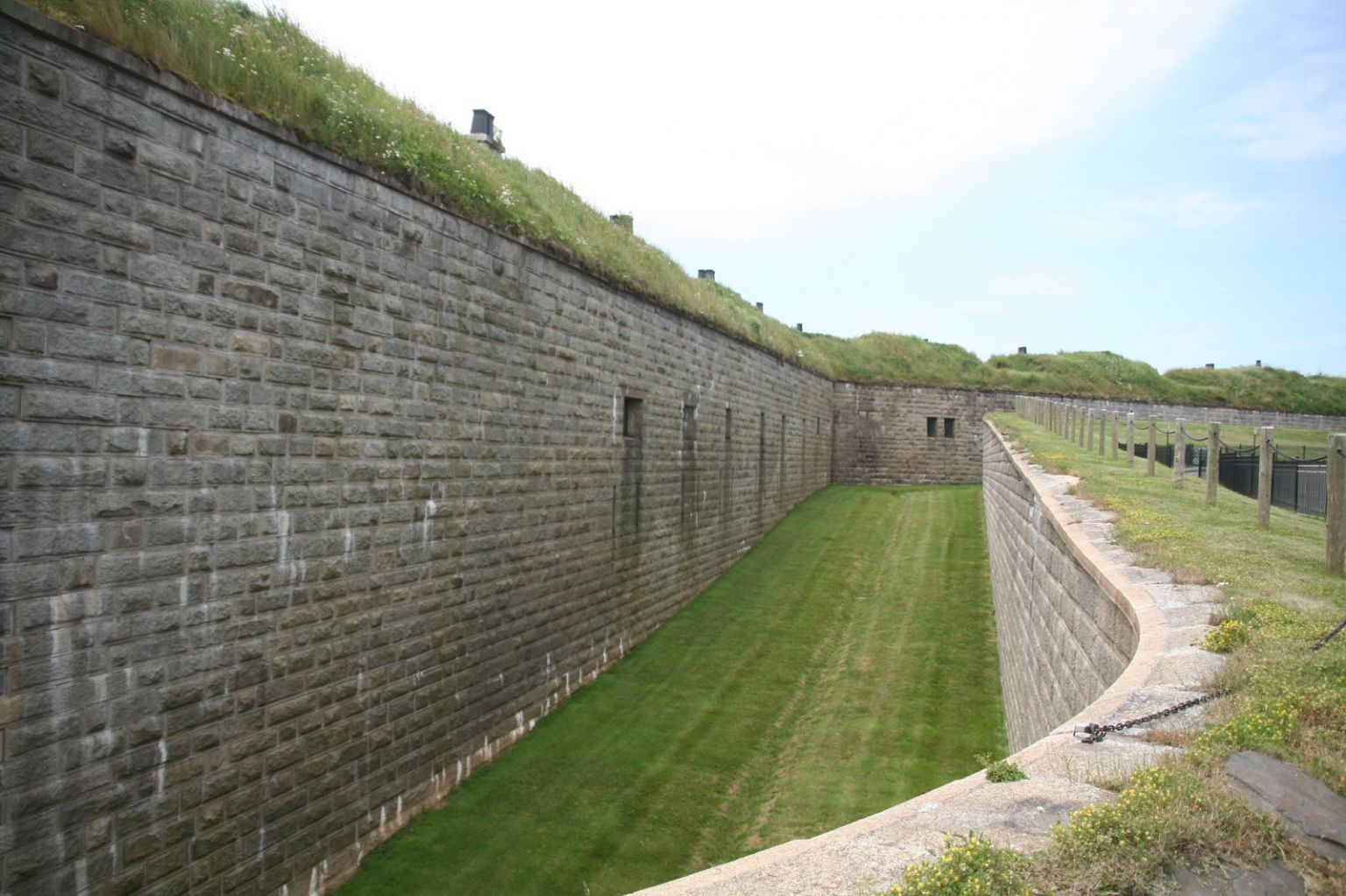When a load is applied to a building, the structure must resist it. All materials have an elastic property that allows them to resist forces. the material, or the structure can do this by pushing, or by pulling. If the structure pushes or pulls to much, or too little, the structure can Move, or fall down. It should be noted that some movement of a structure is a good thing, however it must be contained. Stress is the amount of force on a given unit of Area. As area decreases, stress increases. Stress can cause the area to deform – The Materials Elasticity allows for this to a limit. when the limit is exceeded, the structure will fail.
 |
| Walls of the Citadel. Each stone is in compression |
When something is being pushed on, it can be said to be in compression. Masonry walls are a good example of this, each brick above, pushes down on the ones bellow. Just like building a human pyramid, you need the most strength at the bottom, and the upper members can less robust.
Steel construction in the Chicago Style allowed the walls to be thinner. they no longer needed to hold the building up, only themselves. this meant the walls could be thinner, and have larger openings. This enabled more glass to be used.
When something is being pulled, it can be said to be in tension. Tents rely on tension to stay up, you anchor cords that pull on rods that support the tent. Tension structures are light, which is a big advantage in eliminating dead loads. A Structure in tension is more affected by wide loads. think of how a tent will move in the wind, or a rope bridge sways when people climb on it.
A structure can resist a load using either tension or compression depending how it is designed. A ball can be held in place by hanging it from the ceiling in a room (in Tension), or by placing it on a column (in Compression). Skillfully combing both tension and compression once can build a strong, light and stable structure.
Besides tension and Compression, we have to deal with Shear, Torsion and Bending. These 3 additional forces can all be described in terms of a member experiencing both tension and compression at the same time.
Shear is the tendency of a material to be divided by 2 opposing forces. Think the blades of Scissors on a Piece of Paper. Shear can be thought of a tension and compression working in opposite directions. when you cut, the material between the blades is displaced, one side is Pushed, and the other is pulled. to much push and pull, and the material separates. metal shears are dull to the touch, but can cut sheet metal easily using this principle.
In a building, Shear can happen where floor slabs meet columns. to counteract this, Drop Panels are cast and additional rebar used, to increase the amount of material.
Torsion or torque is the force created when objects twist. Twisting causes one side to be compressed, while the other side is put into tension. to much twisting, and the object will fail.
Finally we have bending, which can also be described in terms of Tension and Compression. when a beam bends, the side opposite the load is put into tension, and the loaded side into compression. a side affect of bending is the Leaver arm effect. where the further a load is applied from the pivot point, the more force is exerted on the other end. this is why you can easily rip a cabinet door off its hinges if it makes contact with a partially open drawer next to it.






